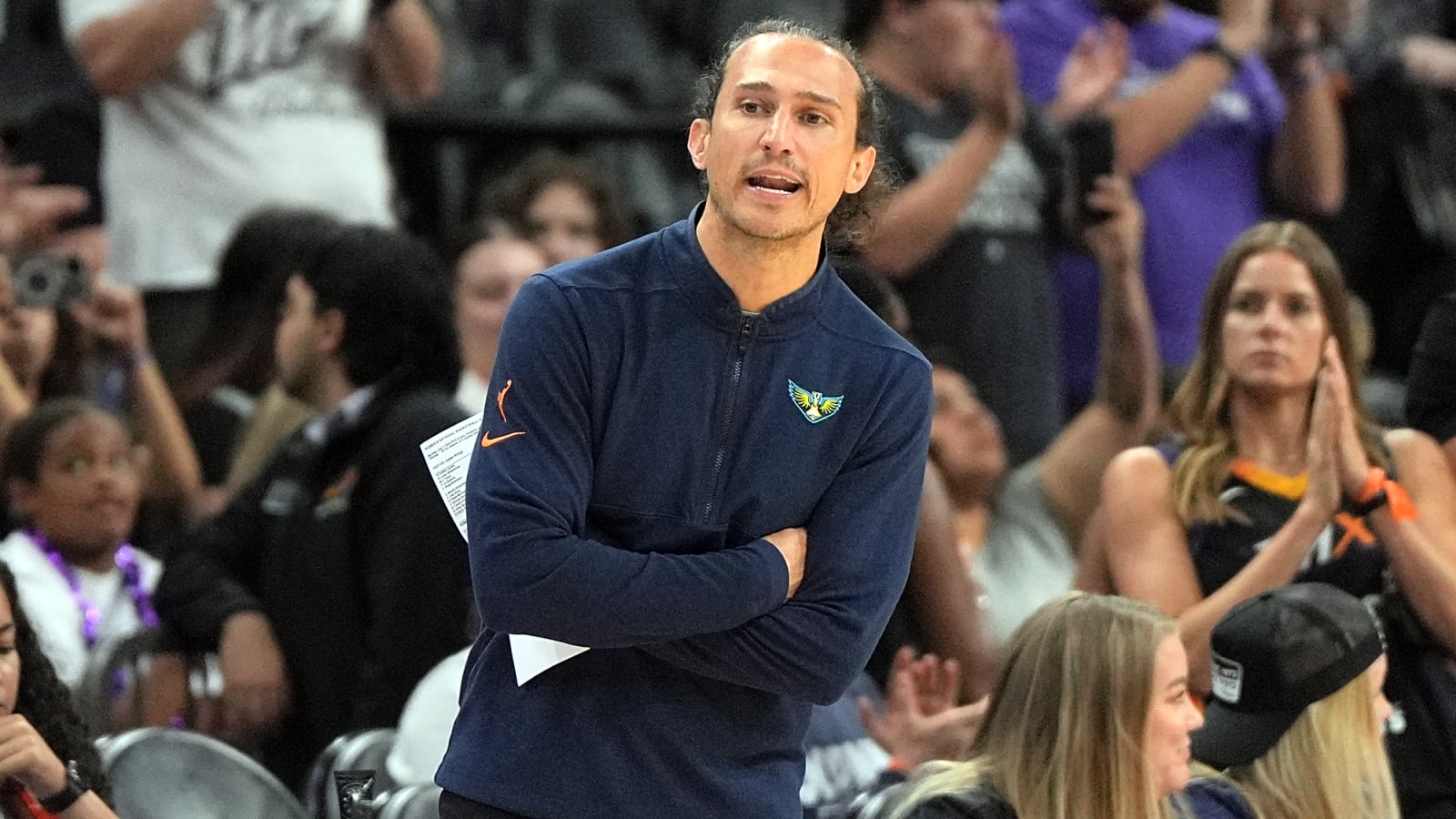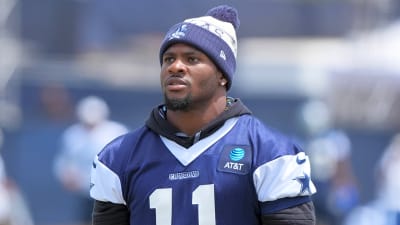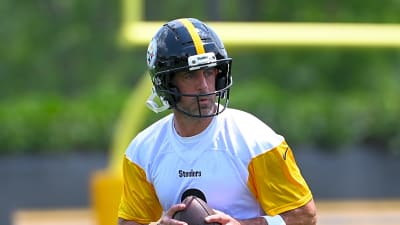
Coming out of the All-Star break, the Dallas Wings didn’t just need a win. They needed rhythm. And in an 87–63 road victory over the Seattle Storm, their largest margin of victory over Seattle since relocating to Dallas, they found both.
The performance marked one of the most efficient and unselfish games of the season for the Wings, who posted 25 assists on 33 made field goals, made 10 threes, and outscored Seattle 53–27 in the second half. It was also the second consecutive game with an assist rate over 73%. The team had previously recorded a franchise-best 94.1% assist rate (32 assists on 34 field goals) in a narrow loss to the Las Vegas Aces.
Dallas has led the WNBA with an average of 28.5 assists per game and an 86.4% assist percentage over its last two contests. For head coach Chris Koclanes, the shift has come from simplifying rather than adding complexity. Instead of overloading the playbook, the focus has been on sharpening reads, cleaning up spacing, and encouraging players to trust their instincts. He’s emphasized pace, purpose, and ball movement to operate more freely and fluidly within the offense.
“I think it’s just continued conversations and film sessions to emphasize shot quality — what a good shot is and how to generate good shots for one another,” Koclanes told DallasHoopsJournal.com. “We’ve also tried to simplify things a bit. Sometimes subtraction is better than addition, so we’ve reeled back the playbook some and focused more on our spacing within a couple of simple actions. That way, players get more comfortable with the reads. The defense can only do so many things. So simplifying, and continuing to emphasize ball movement and sharing it, has really helped.”
Paige Bueckers is Seeing Similarities to UConn
Paige Bueckers recorded 14 points and six assists in Seattle after scoring just two in the first half amid drawing significant defensive attention, often in the form of blitzes. She shot 66.7% in the second half and became the fastest player in WNBA history (tied with Caitlin Clark) to reach 300 points and 100 assists — doing so in just 19 games.
“We create better shots for our offense when we get the ball across by at least 20 [seconds],” Bueckers told DallasHoopsJournal.com. “That’s been an emphasis — getting more high leads, getting more attacks that way, which leads to more mismatches, and we can attack those as well.”
She also highlighted the team’s improved decision-making and overall feel, pointing to better timing on cuts, smarter passing in traffic, and a stronger collective understanding of when to slow down or push the pace. This growth, she noted, has made the offense more cohesive and less reliant on one-on-one creation.
“We’re not forcing anything on offense — changing sides of the floor, passing up good shots for great shots, getting paint touches that allow for outside kickout threes,” Bueckers told DallasHoopsJournal.com. “Obviously, in a full 40-minute game, people are gonna take some tough shots, but really, at a minimum, things have been forced. A lot of our field goals have been assisted. So it’s just been great movement — with our pace and spacing.”
At UConn, Bueckers thrived in a system built on simplicity, spacing, and shared trust, which are elements she sees emerging with the Wings recently amid the natural progression of team chemistry. She said the current offensive rhythm in Dallas reminds her of that style: focused less on scripted sets and more on instincts, chemistry, and pace.
“I had the same experience in college at UConn, where at the end of the day, we kind of just minimized things to keep it easier, keep it simple, stick with the things that work,” Bueckers told DallasHoopsJournal.com. “Then you have obviously stuff deep in the playbook for specific instances and situations, but less is more sometimes. So for us to get better and focus on the few plays that we want to run — and just get really, really good at those — that makes it easy for all of us.”
Koclanes credits Bueckers’s background of playing the “right way” with what she learned at UConn under head coach Geno Auriemma. From Day 1, she stepped in as a rookie with an appreciation for taking on unselfish responsibilities for the betterment of the offense.
“She comes from a culture of playing the ‘right way,’ and it shows. It’s just good basketball — good team basketball,” Koclanes told DallasHoopsJournal.com. “I think our team is getting closer and more connected every day, on and off the floor, trusting each other. Nobody has to do it alone, and we don’t need to take tough shots because everyone’s capable of hitting an open one. If we keep working together and playing with great energy, the ball will find the open person.”
What has impressed Koclanes most about Bueckers is her savvy as an off-ball mover and screener. As a collective, the coaching staff sees a natural growing sense of trust among the offense that the right play will be made with full buy-in. Instead of getting picked up 94 feet all night and getting blitzed, Bueckers understands that getting moved around the half-court and leveraging her gravity while playing off her teammates is a strong way to build a collective flow and create advantages.
“I think it’s her off-ball movement — that’s always been a big part of her game, but you’re really seeing it here now,” Koclanes explained to DallasHoopsJournal.com. “Her cutting and understanding of spacing has been great… She gets a lot of defensive attention, and that can be frustrating. So building trust in her teammates is key — knowing that if she gives up the ball when two defenders are on her, her teammates will make the next right play. That trust is growing, and I think you’ll see that get even better.”
Arike Ogunbowale Has Embraced Patience and Adaptation
Against the Storm, Arike Ogunbowale led the Wings with 20 points on 7-of-12 shooting and drained three 3-pointers, including one in the fourth quarter that pushed Dallas’ lead past 20. She became the franchise’s all-time leader in field goals made with 1,477, passing Deanna Nolan. The performance came after a tough two-game stretch before the break, returning from a left thumb injury—which she mentioned as being a tear—shooting a combined 3-of-22 overall in that span.
“It was team basketball,” Ogunbowale told DallasHoopsJournal.com. “We had 25 assists or something like that. Everyone shared the ball. We didn’t take tough shots — just found the open look and made the extra pass. It was a great team win.”
Ogunbowale credited her teammates for helping her stay focused after a cold shooting start. She missed several open looks early, but the encouragement in the locker room made a difference.
“I missed some easy ones in the first half,” Ogunbowale told DallasHoopsJournal.com. “But at halftime they kept saying, ‘Next one’s in.’ That support helped me stay confident.”
Koclanes also pointed to how Ogunbowale’s shotmaking and gravity have evolved to support the offense’s structure. Her ability to hit contested shots remains elite, but what’s impressed most is how she’s using that attention to fuel ball movement. When defenses collapse on her drives or overplay her on the perimeter, Ogunbowale has been quicker to swing the ball or hit a cutter, creating easier looks for others.
“You always want shot makers late in the game when things slow down,” Koclanes told DallasHoopsJournal.com. “But what got her going [in Seattle] was the easy ones — transition layups, transition threes. When she sees the ball go in early, that’s going to make her feel good.”
Bueckers credited Ogunbowale for more than just her scoring. She pointed to Ogunbowale’s gravitational pull on defenses and her willingness to share the spotlight. Whether Ogunbowale is drawing tough defensive assignments, being a presence in off-ball actions, or creating for teammates, it all adds up.
“Arike is going to face the toughest defender every night,” Bueckers told DallasHoopsJournal.com. “Just by being on the floor, she creates space and opportunities for her teammates. Then, with how she can create off the dribble, off down screens, pin screens, flare screens — she’s a huge weapon. I think her playmaking is underrated, too. She often draws two and still makes the right play.”
The connection between the two has only grown, in part because of Ogunbowale’s willingness to adapt and positive mindset as a veteran leader. As a backcourt tandem, they’ve embraced each other’s impact and are looking forward to what’s to come.
“For [Arike] to embrace me — I’m a rookie who demands and gets a lot of attention — it’s not easy. But she’s been unselfish and welcomed me with open arms,” Bueckers continued to DallasHoopsJournal.com. “That’s made the transition easier for both of us.”
With Bueckers and Ogunbowale, they have continued to find advantages in how the Wings are playing through read-and-react sequences in dribble handoffs and in basic sets where they are deployed as screeners. With a collective embrace of shot quality and keeping it simple, their skill sets are important in making it feasible since their gravity pulls a lot of attention, while also being savvy with timing cuts and being capable of making plays off the catch.
“Off the ball, Arike and Paige both have a lot of gravity. They’ve grown more comfortable being screeners and cutters,” Koclanes told DallasHoopsJournal.com. “You’ve probably noticed we’ve gotten more backdoor cuts, and they’re setting screens that lead into actions for themselves and others. She can hit the tough shots, no doubt — but if we play with pace and keep things simple, we can get her easier ones so she doesn’t have to work as hard.”
JJ Quinerly’s Speed Sparks Early Offense
JJ Quinerly recorded a career-high seven rebounds and was instrumental in pushing the pace and helping the Wings build second-half separation. She also contributed defensively with on-ball pressure that helped force 17 Seattle turnovers. As a starter, Quinerly is averaging 15.0 points, 3.4 rebounds, 4.7 assists, and 1.7 steals in 28.9 minutes per game. She’s shooting an efficient 45.1% overall, 38.5% from deep, and 87.5% on free throws. She’s turning it over 2.4 times per game, but has a respectable 1.94 assist/turnover ratio.
Bueckers highlighted Quinerly’s speed as a key reason for the Wings’ recent offensive rhythm, especially in how it eases pressure on the team’s primary scorers. Her ability to initiate fast breaks and force defenses into early retreats has allowed players like Ogunbowale and Bueckers herself to operate with more space and less ball-handling burden. That separation has been especially valuable against aggressive defenses.
“She’s the quickest player on the floor on any given night,” Bueckers told DallasHoopsJournal.com. “So just to have that speed, that pace, that ability to play off-ball, on-ball — it allows for me and Arike to get some separation and not have to handle the ball 94 feet where teams are gonna be denying and making our catches difficult the entire night.”
Koclanes said the coaching staff is intentionally focusing on her ability to set the tempo even as she learns. He noted that Quinerly’s elite speed changes the dynamic of the game, often forcing opposing defenses into early mismatches or scramble situations. By empowering her to take command in transition and explore different reads, the Wings are giving her the space to grow through reps, even if it comes with mistakes.
“We’re trying to instill confidence in her to be who she is and bring everyone along with her,” Koclanes said to DallasHoopsJournal.com. “We’re putting the ball in her hands a lot and asking her to generate our initial tempo. And we’re okay with mistakes — like you said, there are good mistakes when the intent is right.
“[Against Seattle], no one was really ready to start, and she especially struggled early, but when she got back out there, she knew we all believed in her,” he continued. “We need her to get the ball up the floor and put pressure on the paint.”
Having the runway to learn the ideal balance for pushing the pace has been embraced by Quinerly. After the loss against the Aces, she acknowledged that while playing fast has often worked in the team’s favor, there are critical moments, especially late in quarters, where pulling the ball out and working for a better shot is the smarter approach. She said the group is continuing to grow into that nuance together.
“I think our pace — being fast and getting the ball up the court — has worked well for us recently,” Quinerly told DallasHoopsJournal.com. “But there are times, depending on the time and score, that we need to learn to pull the ball out and get a better shot.”
Koclanes praised Quinerly’s growth in attacking the paint, specifically by recognizing when to challenge bigger defenders at the rim versus spraying it out to a shooter after drawing help.
“She’s getting better at recognizing when to challenge bigger defenders around the rim, when to keep her dribble, and when to spray it out,” Koclanes told DallasHoopsJournal.com. “Offensively, she raises our level with her speed, and defensively she’s just tenacious on the ball.”
Haley Jones Thriving as Point Forward and Spark Plug
Haley Jones has quietly become one of the Wings’ most dependable and versatile contributors. In back-to-back games, she reached double figures, recording 10 points, six assists, six rebounds, two steals, and three blocks in a win over the Storm after a 12-point, five-rebound outing against Las Vegas. Her performance has mirrored the Wings’ growing chemistry and fluidity on offense — a development Jones said has been fueled by increased continuity and recent practice time.
“The flow is definitely improving, and that’s just from building chemistry and spending more time together,” Jones told DallasHoopsJournal.com. “We’ve had a lot of changes and players in and out, but last week’s practices in Dallas really helped. The ball’s moving better, players are getting cleaner looks, and there’s less one-on-one forcing. And I think it’s only going to get better. Even though there are still some stagnant moments, the growth we’ve made says a lot about what’s ahead.”
In the 104 minutes Jones has played this season, the Wings have outscored opponents by 19.1 points per 100 possessions — their best net rating in any rotation. The team’s pace rises to 101.25 with her on the court, and the assist-to-turnover ratio spikes to 2.31.
Jones also reflected on how her evolving role with Dallas has unlocked different parts of her game during her second stint with the team. Depending on matchups, she’s filled roles at every position, from point guard to power forward, and her growing connection with key players has been central to the team’s progress.
“It’s been about getting more comfortable — knowing the girls, understanding what I bring, and having clear communication from Coach Chris and the staff,” Jones told DallasHoopsJournal.com. “Whether I’m playing the one through four, it depends on the matchups. They’ve trusted me in different roles — guarding bigs, pushing in transition, making plays. That trust helps, and my chemistry with everyone — Paige, Arike, [Aziaha], JJ — it’s all growing game by game.”
She also pointed to last week’s practices in Dallas as a turning point for the team’s execution. With fewer bodies in and out of the lineup, the Wings were able to focus on refining their sets, building timing, and establishing clearer reads in their motion-heavy system.
“We’ve had a lot of changes and players in and out, but last week’s practices in Dallas really helped,” Jones told DallasHoopsJournal.com. “The ball’s moving better, players are getting cleaner looks, and there’s less one-on-one forcing. Even though there are still some stagnant moments, the growth we’ve made says a lot about what’s ahead.”
Luisa Geiselsöder and Li Yueru Bringing Inside-Out Balance
Luisa Geiselsöder had 13 points and shot 4-of-7 from the field, including a career-best 3-of-5 from beyond the arc, marking her second consecutive double-figure scoring performance after scoring 14 against Las Vegas. She led the Wings with eight points in the second quarter and continues to grow more comfortable operating alongside Li Yueru.
“The assists come because we’re learning each other’s movements,” Geiselsöder told DallasHoopsJournal.com. “We know what shots we’re comfortable taking, and we trust every shot someone takes. That trust shows in how we play.”
Geiselsöder has shown herself to be another high-level decision-maker with the ball in her hands. Whether she’s in space as a dribble handoff big, playing inside, setting great screens, spacing the floor, or cutting, she’s found ways to make a timely impact as a complementary talent. Her ability to play both the four next to a traditional center and be a small-ball five has given Dallas helpful lineup versatility.
Meanwhile, Yueru added eight points and a game-high 10 rebounds in her first appearance back in Seattle since being traded on June 14. She achieved this while recording her second consecutive game with multiple made 3-pointers for the first time in her WNBA career. She’s found a real rhythm from beyond the arc, shooting a staggering 44.4% from deep on the season.
“I feel like the team gives me a lot of energy,” Yueru told DallasHoopsJournal.com. “They believe in me and make me feel like I can do more. Even when I don’t feel great on offense, they still trust me and keep me on the court to help in other ways. I really appreciate that, and I promise I’ll keep getting better.”
Yueru’s success from the perimeter began in her 18-point, 10-rebound performance against the Chicago Sky on July 9, when she made a career-best four 3-pointers and shot 57.1%. She’s totaled eight shots from the perimeter over this four-game span.
Geiselsöder credited improved communication and complementary skill sets as key to her on-court fit with Yueru, especially in the frontcourt rotation. Both players can step out and shoot as floor spacers or on the pop and are capable of making plays inside the arc. Everyone involved appreciates having the option without sacrificing spacing, and now they are learning each other’s tendencies.
“I’m starting to understand her movements better — what shots and passes she likes,” Geiselsöder told DallasHoopsJournal.com. “We’re also reading off each other better. She can shoot from the outside, and I can be inside, so we balance each other well. It’s a good fit.”
Koclanes said the frontcourt’s shooting ability and screening angles have opened up the floor significantly, especially in the team’s read-and-react style. With players like Yueru and Geiselsöder spacing out and making sharp reads, the Wings have been able to generate cleaner driving lanes and higher-quality looks.
“We’re continuing to infuse confidence in both of them to be aggressive. It’s about finding balance,” Koclanes explained to DallasHoopsJournal.com. “We want to space the floor, and those two can shoot just as well as anyone, so we’ve given them the green light to let it fly on the perimeter. That opens up space for drives and cuts by our guards.”
Koclanes emphasized the value the Wings’ bigs bring beyond just spacing the floor, pointing to their screening, defensive physicality, and evolving presence in two-man actions. Dallas wants to leverage their talent inside the arc by putting pressure on the rim with rim rolls and being a focus of actions. It only helps that they take pride in setting quality screens.
“They’re also really good screeners — intentional with their angles — so they help our guards get open and put pressure on the rim by rolling hard,” Koclanes said to DallasHoopsJournal.com. ” We don’t want them to just space out and be catch-and-shoot players. We want them in actions, rolling, and putting pressure on the rim. And defensively, they’ve both shown great physicality, presence, and tenacity.
Bueckers said the frontcourt’s chemistry has been a work in progress, especially since Yueru and Geiselsöder joined the team midseason under different circumstances. The patience is beginning to pay off as the team continues to build around their versatility.
“Chemistry takes time,” Bueckers told DallasHoopsJournal.com. “Li came in partway through the season without training camp, and Luisa joined late and has been in and out. It just takes reps, communication, watching film, and learning each other’s tendencies — where we like the ball, how to get them involved in the offense. We knew it wouldn’t happen overnight, so we’ve just been patient, given each other grace, and helped each other along the way.”
Offensive Identity is Taking Shape
Koclanes said the team’s offensive identity has taken shape over the past few games — a shift that began just before the All-Star break and continued into their win in Seattle. In that final game before the break, the Wings nearly erased a 22-point deficit against the Aces, ultimately falling 90–86 despite recording 32 assists on 34 made field goals — a record-setting 94.1% assist rate.
That momentum carried forward as Dallas leaned into ball movement and better spacing. Koclanes said the vocal leadership of his two backcourt stars matters just as much as their on-court production.
“We’ve come a long way and still have a long way to go, but if you listen to that Seattle postgame press conference with Paige and Arike, everything she talked about was team basketball — moving the ball, working together to get the right shot,” Koclanes emphasized to DallasHoopsJournal.com. “That game was one of our best in terms of shot quality.
“Seattle missed a bunch of shots, so we got out in transition and generated higher-quality looks. But even when the game slowed down, we had better spacing, and we were unselfish,” he explained. “To hear that kind of message coming from both Arike and Paige — the trust and belief in playing that way — that’s exactly what you want to hear.”
Now 7–17, the Wings will face the Golden State Valkyries on Friday night at Chase Center, looking to sweep the season series after defeating them 80–71 on June 17. A second straight road win would mark the team’s first back-to-back victories away from home this season.
For Bueckers, the recent progress was expected with the understanding that patience would be necessary. With time, they’ve been able to learn tendencies, improve communication, and better take advantage of their collective strengths.
“It’s just time, reps, getting to talk, communicate, watch film, get to know each other, know what our tendencies are, what spots we like the ball,” Bueckers told DallasHoopsJournal.com. “It just took some time. We knew it wasn’t going to happen right away.”
Now, it’s all coming into motion.
More must-reads:
- Sophie Cunningham has profane rant about disrespect of Caitlin Clark
- NFL insider reveals new info on Cowboys-Micah Parsons struggle
- The '250-strikeout MLB seasons' quiz
Breaking News
Trending News
Customize Your Newsletter
 +
+
Get the latest news and rumors, customized to your favorite sports and teams. Emailed daily. Always free!








